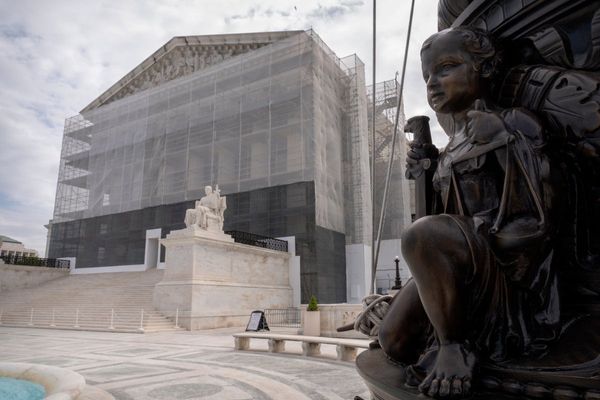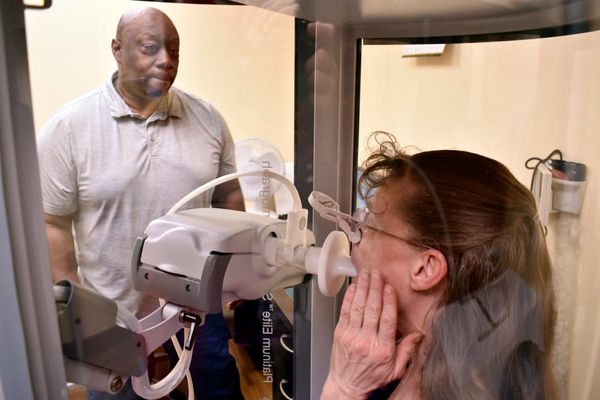
A Brush With Grażyna
I had my first brush with the music of Grażyna Bacewicz at a Krystian Zimerman recital at Baltimore’s Shriver Hall that opened their 40th Anniversary Piano Celebration in 2006. Concluding a very fine recital (albeit marred by Zimerman’s gratuitous political ranting; see: “Political Piano at Shriver Hall”), he played Grażyna Bacewicz’ Piano Sonata No.2. After that, he was off, commendably encore-less, despite wildest ovations. At the time I described the impression thus: “Music that has its home in a black pool of deep sounds all the way on the left of the keyboard, it jumps to life, repeatedly, into the higher register. Every one of its three movements ends contemplatively. It was delivered with panache […], it is a work obviously close to his heart, and he won many new ears for it with his performance.”
Three years later the 100th anniversary of Grażyna Bacewicz took place and I started becoming increasingly interested in this composer, a clear candidate for inclusion in a third edition of “Surprised by Beauty” if there ever shall be one. There were rumors flying about that Krystian Zimerman had or would record music of Bacewicz’ … but the promised release kept being delayed. When it was finally issued in 2011, it came with little fanfare or marketing efforts; as if half in secret… and I missed it. (It was so stealthy that a magazine recently called Krystian Zimerman’s new Schubert album “his first solo effort in 15 years”, also overlooking the part-solo, part-chamber Bacewicz release) Now I’ve finally amended that oversight – and gladly: It is an obvious, superb introductory Bacewicz disc and a must-have for anyone who is already beholden to Bacewicz’ music. In fact, it’s good enough to have made it onto my “Best Classical Recordings of 2011” list, had I known about it at the time.
A Brief History of the Composer
It was some 108 years ago that Grażyna Bacewicz was born in Łódź, to a Polish mother and a Lithuanian father from whom she received her first musical training. Her prodigious talent became soon obvious and she gave her first public performances at the age of seven. Her first composition followed at thirteen. At 19 she began to study philosophy at the University of Warsaw, but after just over a year she decided to focus more on music and enrolled in the Warsaw Conservatoire where she studied violin with Józef Jarzębski, piano with Jan Turczyński, and composition with Kazimierz Sikorski.
During her time at the Conservatoire, Karol Szymanowski recommended she study at the École Normale de Musique with Nadia Boulanger in Paris, which she did in the 1930s, thanks to a scholarship from composer/politician Ignacy Jan Paderewski. In Paris, she also studied with André Touret and – after a stint of touring Spain as a performer and teaching harmony in Łódz with none less than Carl Flesch Part of her graduation concert was the neo-classical Wind Quintet from 1932 which won her the First Prize at the Competition of the ‘Société “Aide aux femmes de professions libres”.
She became the principal violinist of the newly established Polish Radio Orchestra in Katowice where she was able to perform some of her own compositions – including the First Violin Concerto. Several more prestigious prizes followed, including the Second Prize at the Chopin Competition in Warsaw (1949, for her Concerto for Piano and Orchestra) and the Gold Medal at the Queen Elisabeth Competition in 1965 for her Seventh Violin Concerto. A capable pianist as well as a violinist, she also premiered her Second Piano Sonata from 1953, which remains one of her more commonly performed compositions. It was the last composition she would perform herself, after a car accident in 1954 – at age 45 – prohibited a continuation of her professional performing career.

Amazon mp3: $9.5 | Amazon CD: ~$15 | ArkivMusic: $19 | Qobuz: £11 | iTunes mp3: $10
One of the most prolific female composers, she managed to produce over two hundred works which include four symphonies, seven violin concertos, a piano concerto, a concerto for two pianos, a double concerto for viola and cello, and numerous chamber works which include seven string quartets and five violin sonatas. Her style, although she tried to eschew the classification, is largely neo-classical – the 1948 “Concerto for Strings” being a prime example of this pervasive element in Bacewicz’ style. It was given its world premiere by the Washington NSO in 1950 under its second music director, Howard Mitchell. Milton Berliner, reviewing for the Washington Daily News, reported: “Actually, there was nothing feminine about Miss Bacewicz’s piece. It was vigorous, even virile, with a pulsing, throbbing rhythm and bold thematic material [in the first movement]. It was either conservatively modern or radically classical. In any case, it was worth listening to…” It might sound somewhat patronizing to us, half a century later, but it’s obvious he meant well, he got the work’s character right and he was evidently, genuinely impressed.
The prescriptions of the Polish cultural apparatchiks after the war were such that much of her music tried to appease the censors (always on the lookout for “formalistic” music) with the recommended integration of Polish folk elements into their music. Her Third Violin Concerto from1948 is a good example of this – with a tone that unmistakably places Bartók at the origin of the inspiration. In the last fifteen years of her life her style didn’t so much change as it amalgamated pantonal influences of which her late string quartets speak. Grażyna Bacewicz died, not quite sixty, in 1969.
An Introduction to the Music
It is one thing to read about a composer to glean some understanding of them, but of course the thing is to listen to a composer, to get to know them. The best works and recordings to do so, include her string quartets (for example String Quartet No.4, with the Szymanowski Quartet on Avie), the aforementioned Concerto for String Orchestra, (conducted by Pawel Przytocki on a DUX disc that might be out of print), or some of her Sonatas for Violin & Piano (for example as played Lydia Mordkovitch on Chandos). And, easily at the top of the heap, this recording.
The works are representative of Grażyna Bacewicz’s best, covering some of the diversity of her styles. And the performances are simply superb. In the piano sonata (there is also an earlier, 1977 recording of that piano sonata with Krystian Zimerman, but that’s on an Olympia disc and solidly out of print), that’s very notable when the seductive, phenomenal pianism of Zimerman’s evokes the atmospheric qualities of the music of Scriabin in the first movement. Indeed, the whole second sonata is even more striking to me now than one first hearing eleven years ago; a piece with lyrical moments of great beauty and a lively, propulsive drive… fleet and elegant and yet with plenty of force and bite.
The Piano Quintet No.1 is as bewitching an introduction to Bacewicz as there might be; its first movement is lively and entertaining and has an element of playful wit that isn’t unlike what can be found in Saint-Saëns. And yet there is also that forward drive and those hints of darkness between the playful moments that the slow movement then picks up on, with its elegiac, wistful introduction.
Admittedly, this music, written in 1952, does not sound like the work of “one of the… most forward-looking composers of her generation” (Jan Popis), but rather like the work of a composer utterly unconcerned with fitting in with the latest academic trends. Even when Grażyna Bacewicz started to embrace the avant-garde movement, it was a tepid – or at least tempered - embrace.
Case in point the 1965 second Piano Quintet: It is markedly more thorny; a wild and occasionally frenzied work with forcefully whipped string passages and a spiky piano accompaniment. Like the other Bacewicz works on this disc, it has extended lyrical moments, but they are more astringent here, and less straightforward. But even if one enjoyed only the brief acquaintance with her music from the previous seven tracks, this should have sufficed to open the ears to pick up the underlying beauty that is inherent to Bacewicz’s music, even where she employs modernist and dodecaphonic techniques towards her musical ends.
“A lot happens in my music,” Grażyna Bacewicz is quoted in the fine liner notes; “it’s aggressive and at the same time lyrical.” That’s exactly right and every listener will get that impression from the first hearing. But the music is also complex, extremely well written – which is something that gives the music its staying power and its ability to delight yet even more, after each repeat-listening. The key is now to get Bacewicz performed often enough to be able to enjoy not just first, but repeat-listenings. Until then, this CD serves us very well.







